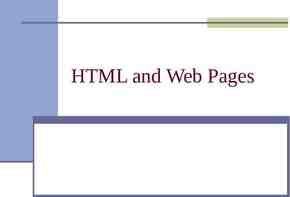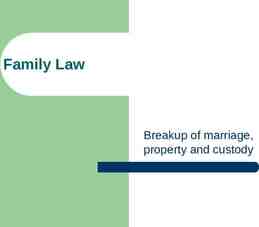CIVICS IN PRACTICE HOLT Chapter 11 The Political System Section
20 Slides74.50 KB

CIVICS IN PRACTICE HOLT Chapter 11 The Political System Section 1: Shaping Public Opinion Section 2: Interest Groups Section 3: Taking Part in Government 1 HOLT, RINEHART AND WINSTON

CIVICS IN PRACTICE HOLT Section 1: Shaping Public Opinion The Main Idea Political leaders and interest groups find many ways to shape public opinion and influence the beliefs of American citizens. Reading Focus What is public opinion, and how is it shaped? What is propaganda, and what are six common propaganda techniques? How is public opinion measured? 2 HOLT, RINEHART AND WINSTON

CIVICS IN PRACTICE HOLT Section 1: Shaping Public Opinion People’s opinions are influenced by Family, friends, teachers, and clubs. Information from mass media: television, newspapers, magazines, radio, and the Internet. 3 HOLT, RINEHART AND WINSTON

CIVICS IN PRACTICE HOLT Section 1: Shaping Public Opinion The importance of staying informed Democracy requires informed citizens. Well-informed citizens must recognize differences between facts and opinions. 4 HOLT, RINEHART AND WINSTON

CIVICS IN PRACTICE HOLT Section 1: Shaping Public Opinion Propaganda Propaganda is ideas spread to influence public opinion, consumers, and voters. Mass media and communications technology enable the spread of propaganda. 5 HOLT, RINEHART AND WINSTON

CIVICS IN PRACTICE HOLT Section 1: Shaping Public Opinion Propaganda methods: Concealed propaganda attempts to fool people. Revealed propaganda makes people aware that it is trying to influence them. Propaganda techniques: bandwagon, card stacking, glittering generalities, name-calling, plain-folks appeal, and testimonials 6 HOLT, RINEHART AND WINSTON

CIVICS IN PRACTICE HOLT Section 1: Shaping Public Opinion Measurements of public opinion: Elections Polls or surveys—take opinions of “samples” of population Wording of polls, number of responses and the sample population influence the outcome of polls. Polls may also influence public opinion. 7 HOLT, RINEHART AND WINSTON

SECTION 1 CIVICS IN PRACTICE HOLT Question: How is public opinion measured? Measuring Public Opinion elections 8 polls HOLT, RINEHART AND WINSTON

CIVICS IN PRACTICE HOLT Section 2: Interest Groups The Main Idea Interest groups work to persuade the government to adopt particular policies and address specific issues. Reading Focus What are interest groups, and what are the different types of interest groups? How do lobbyists try to influence government and public opinion? Do interest groups have too much power? 9 HOLT, RINEHART AND WINSTON

CIVICS IN PRACTICE HOLT Section 2: Interest Groups Interest Groups Organizations that seek to influence government policy Also known as pressure groups or lobbies Lobbies do not seek to influence elections like the political parties do. Lobbies may represent economic interests, social interests, or general public interest. 10 HOLT, RINEHART AND WINSTON

CIVICS IN PRACTICE HOLT Section 2: Interest Groups Different types of interest groups: Business associations, labor unions, farm organizations, veterans’ organizations, teachers’ associations, and consumer groups Public interest groups 11 HOLT, RINEHART AND WINSTON

CIVICS IN PRACTICE HOLT Section 2: Interest Groups Criticism of interest groups: Interest groups are too involved in lawmaking. Well-funded and organized groups receive too much attention; other interests are not equally represented. 12 HOLT, RINEHART AND WINSTON

CIVICS IN PRACTICE HOLT Section 2: Interest Groups How do lobbyists try to influence opinion? Propose, research, and help write bills for 13 Congress Testify at committee hearings and may present evidence Supply lawmakers with information Advertise in the mass media Supply workers and funds to election campaigns HOLT, RINEHART AND WINSTON

SECTION 2 CIVICS IN PRACTICE HOLT Question: How do lobbyists try to influence government and public opinion? How Lobbyists Influence Opinions Argue for or against legislation Ask congressmembers to sponsor bills Supply information, help write bills Testify at hearings Advertise Provide workers and contributors for candidates Urge people to contact public officials 14 HOLT, RINEHART AND WINSTON

CIVICS IN PRACTICE HOLT Section 3: Taking Part in Government The Main Idea Americans can participate in government by voting and speaking out on the issues that matter to them. Reading Focus What are the four ways that all citizens can participate in government? Why is voting important, and why do so few U.S. citizens vote? How do volunteers and interest groups help political campaigns? 15 HOLT, RINEHART AND WINSTON

CIVICS IN PRACTICE HOLT Section 3: Taking Part in Government Four ways of participating in government: Vote in local, state, and national elections Work for political parties Speak out on public issues Work to improve our communities 16 HOLT, RINEHART AND WINSTON

CIVICS IN PRACTICE HOLT Section 3: Taking Part in Government Voting A right and a responsibility Expresses our opinions about our leaders and their policies U.S. voter turnout is one of the lowest in the world. Apathy, failure to register, illness, dissatisfaction with the candidates, location, and residency requirements contribute to poor voter turn-out. The 1916 and 2000 elections demonstrate the importance of every vote. 17 HOLT, RINEHART AND WINSTON

CIVICS IN PRACTICE HOLT Section 3: Taking Part in Government Volunteers and interest groups help political campaigns through: Telephone and door-to-door campaigning Distribution of literature on the street Mailings Interest groups provide volunteers and funds via political action committees. 18 HOLT, RINEHART AND WINSTON

SECTION 3 CIVICS IN PRACTICE HOLT Question: What are five ways that citizens can participate in government? How Citizens Can Participate in Government voting speaking out on issues contacting public officials 19 working for a political party volunteering in the community HOLT, RINEHART AND WINSTON

CIVICS IN PRACTICE HOLT Chapter 11 Wrap-Up 1. How does the use of propaganda differ in totalitarian societies and democratic societies? 2. What is the purpose of polls? Why must polls use representative samples? 3. How do interest groups differ from political parties? 4. Identify ways that lobbyists try to influence public policy and opinion. 5. How can citizens take party in the political system? 6. Why is voting important? Why do so few Americans vote? 20 HOLT, RINEHART AND WINSTON






